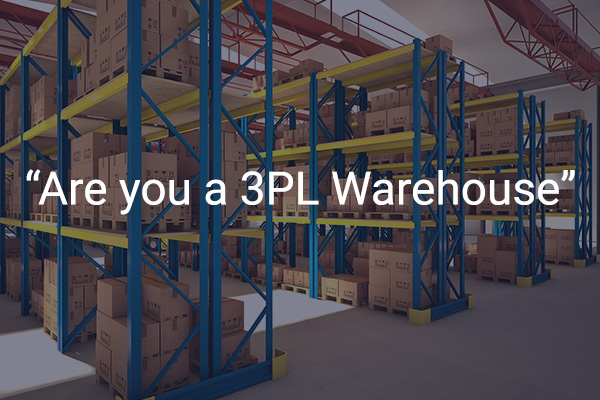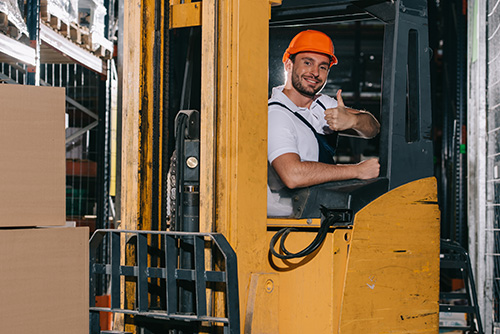Are you a 3PL Warehouse?

With a name like Camelot 3PL Software and a website URL of 3plsoftware.com we get a lot of inquiries from companies looking for “3PL Software”. We also get a lot of supplier companies looking for “regular warehousing software”. We pride ourselves on serving the 3PL warehousing industry, exclusively. We thought it might be important to talk about 3PL warehousing and how it is different than regular warehousing.

What is 3PL warehouse?
3PL stands for third-party logistics. A 3PL warehouse does everything a regular warehouse does but it doesn’t own the inventory they are managing. They typically have multiple clients and provide a variety of functions for their clients. In addition to the typical pick, pack, and ship functions of a regular warehouse, a 3PL warehouse can do kitting, repackaging, inspection services, eCommerce fulfillment, reverse logistics, break-bulk, hazmat, demand planning, and much more.
One of the biggest differentiators of a 3PL warehouse is that it provides warehousing and logistics services for multiple clients. Therefore, the 3PL needs an extremely flexible warehouse management system (WMS) that can work according to the specific needs of each client.
Why do suppliers work with 3PL warehouses?
The cost to own and operate a warehouse can be high. Suppliers know this. Industrial real estate prices (and leases) continue to rise. Warehouse workers are in short supply and the cost to hire, train and retain warehouse workers is also high. Smart suppliers understand that it makes strategic sense to stick to their core business of branding and selling and leave the warehousing and logistics to the experts.
Are all 3PLs the same?
The short answer is no. With the acceleration of online commerce in recent years, some 3PLs offer eCommerce fulfillment capabilities. This usually involves high-volume fulfillment and integrations with shopping carts, marketplaces, and shipping carrier systems. While there are some 3PLs that provide only fulfillment services other 3PLs stick with traditional pallet in / pallet out. As the industry evolves many traditional 3PLs are now offering both eCommerce fulfillment and regular warehousing services. Let’s talk a little more about the various functions of a 3PL warehouse:
Receiving
Receiving involves the inbound receipt of inventory by the 3PL. Every supplier is different. Some suppliers require standardized packaging such as pallets and cartons or non-standard packaging such as rolls of paper and bundled lumber. Some inventory is serialized and requires proper tracking of serial numbers. Date-sensitive food products also require special treatment to ensure freshness. As illustrated, there is a wide range of situations that a 3PL warehouse needs to manage when working with suppliers.
Warehousing
One of the basics functions of a 3PL warehouse is the storage of inventory. Suppliers need confidence that their products are stored in a way that keeps them safe and secure. Sometimes this involves specific climate-controlled warehouse conditions such as refrigerated or cold-storage capabilities. Extra security precautions such as additional fencing may be required for high-value products. A 3PL also needs to provide full visibility of the supplier’s inventory – what’s in the warehouse, what’s being shipped.
Fulfillment
Fulfillment is the broad term meaning to pick, pack and ship a supplier’s orders. As previously mentioned, some 3PLs perform high-volume order fulfillment for eCommerce orders that ship quickly. The WMS should be capable of batch picking methods to efficiently pick large volumes of orders accurately. Other orders may involve special handling and packing with less time-sensitive requirements. This is another reason the 3PL must have a robust warehouse management system to be able to meet the requirements of a wide range of customers.
How do you choose the right 3PL Partner?
A thorough review of the supplier’s requirements is needed first before selecting the right 3PL Partner. How quickly do you need orders to be shipped? What storage requirements do you have? How quickly does your company plan to grow and does the 3PL have the additional capacity? What kinds of integration capabilities does the 3PL have? Do they have multiple locations to get products to customers quicker? Is the 3PL able to charge accurately for the services they are providing?
Although this just scratches the surface of what a 3PL does, we hope it gives you a better understanding of the complexities involved with running a 3PL warehouse. Technology plays a big part in lowering costs and improving the customer experience. Camelot provides highly configurable warehouse management solutions to meet the needs of today’s 3PL warehouse.
